Choosing the right web server software is critical when building a reliable, fast, and secure website or application. The web server acts as the middleman between your users and your site’s content, so performance, configuration options, and scalability all come into play. Whether you’re managing a high-traffic eCommerce platform, a lightweight blog, or a custom application, your choice of web server can make a big difference in the user experience and backend management.
In this guide, we’ll break down the best web server software choices available today, explain how they compare in real-world scenarios, and help you determine which one fits your needs best. Whether you’re launching a small project or deploying a major platform, this webserver comparison will point you in the right direction.
What is Web Server Software?
Web server software is a program that handles requests made by users’ browsers and serves web content—like HTML pages, images, or API responses—over the internet. When a user types in a URL or clicks on a link, the web server receives that request and returns the appropriate content, enabling the website to function.
It plays a central role in the software stack of any hosting setup. The web server sits on top of the operating system and works alongside components like databases, PHP processors, and CMS platforms (e.g., WordPress or Joomla) to deliver a complete web experience. Some of the best web server software solutions also include built-in tools for SSL management, caching, and proxying—helping to streamline performance and reduce server load.
Some web servers are optimized for speed and resource efficiency, while others are known for flexibility or compatibility with specific applications. Knowing what to prioritize helps narrow your options and avoid future performance bottlenecks.
Key Features to Consider
When selecting web server software, keep these features in mind to ensure your setup aligns with your performance goals and technical environment:
- Performance: Some servers excel at handling large numbers of simultaneous connections or delivering static content rapidly. A good server should respond quickly even under heavy load.
- Security: Built-in modules or easy SSL configuration can save time and improve safety. Support for HTTPS, authentication, and access control is essential.
- Flexibility and Customization: Whether you want to rewrite URLs or handle specific types of applications, your server’s ability to adapt matters.
- Compatibility: Make sure it supports your preferred OS (Linux, Windows, etc.) and integrates well with your application stack.
- Ease of Configuration: A user-friendly configuration style and helpful documentation can greatly reduce setup time and errors.
- Scalability: If your project is expected to grow, the server should scale well with increasing traffic or content demands.
Best Web Server Software Options
Each contender on this list has earned a place among the best web server software options due to proven performance, flexibility, and scalability. Below are the most reliable and commonly used web server solutions today, each with its strengths, weaknesses, and ideal use cases.
Apache HTTP Server
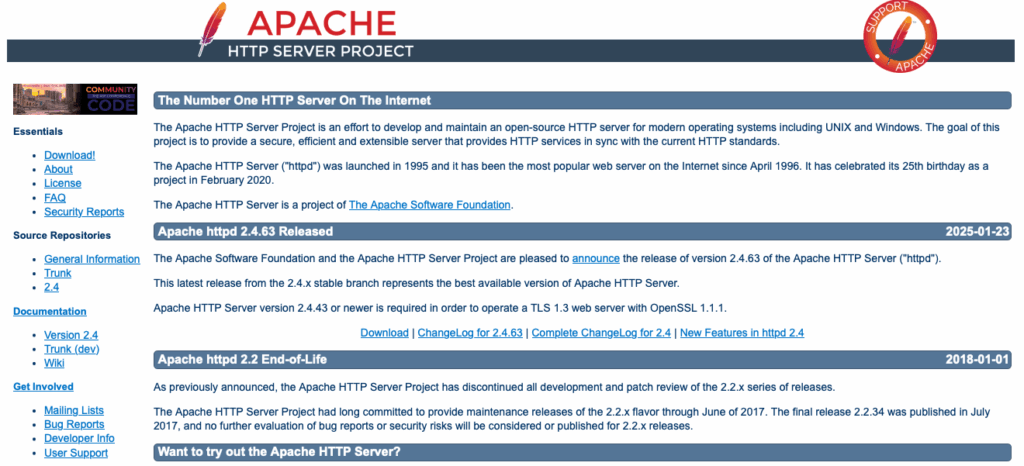
Apache has been a staple of web hosting for decades. As one of the oldest and most widely used web server software options, it’s known for its stability, rich feature set, and broad community support.
- Pros: Offers extensive modules (mod_rewrite, mod_ssl), supports dynamic content via CGI or PHP, and is extremely configurable through .htaccess files.
- Cons: Higher memory usage and slightly slower performance under high concurrency compared to Nginx or LiteSpeed.
- Best for: Shared hosting providers, developers needing flexibility, and legacy systems running PHP or Perl.
Apache stands out in shared hosting environments because of its compatibility with tools like cPanel and its granular directory-level control. It remains a go-to for setups where fine-tuned control and backward compatibility are more important than raw performance. While not the fastest server under high load, it’s excellent for general-purpose hosting environments that prioritize flexibility.
Nginx
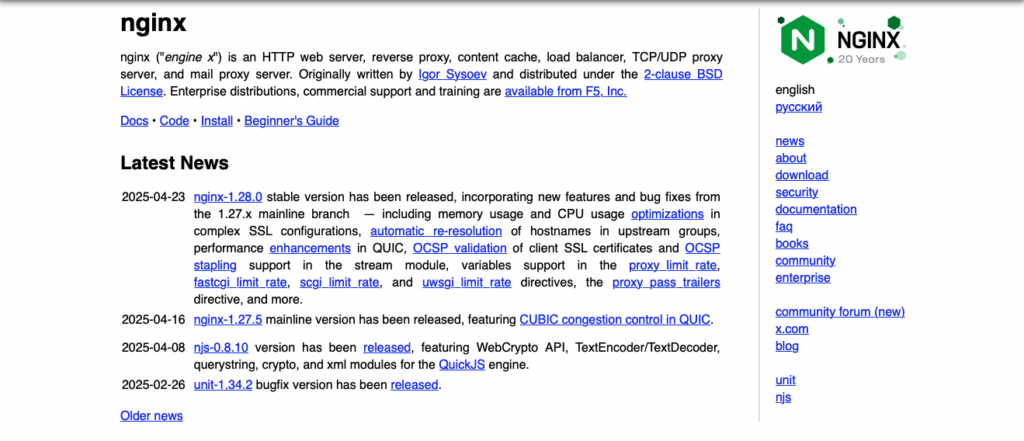
Nginx (pronounced “Engine-X”) is a high-performance, lightweight web server that has taken the hosting world by storm. Originally designed to handle massive concurrent connections, it’s now widely used as both a web server and reverse proxy.
- Pros: Low memory consumption, excellent at serving static content, and optimized for high concurrency. Commonly used with PHP-FPM for dynamic websites.
- Cons: Configuration syntax is less intuitive for beginners; lacks .htaccess-style flexibility.
- Best for: High-traffic websites, reverse proxy setups, and modern web applications where performance is key.
Nginx often replaces Apache when scalability and performance become bottlenecks. It’s favored by developers managing large-scale websites or APIs and is frequently paired with caching layers or load balancers for optimal efficiency.
LiteSpeed Web Server
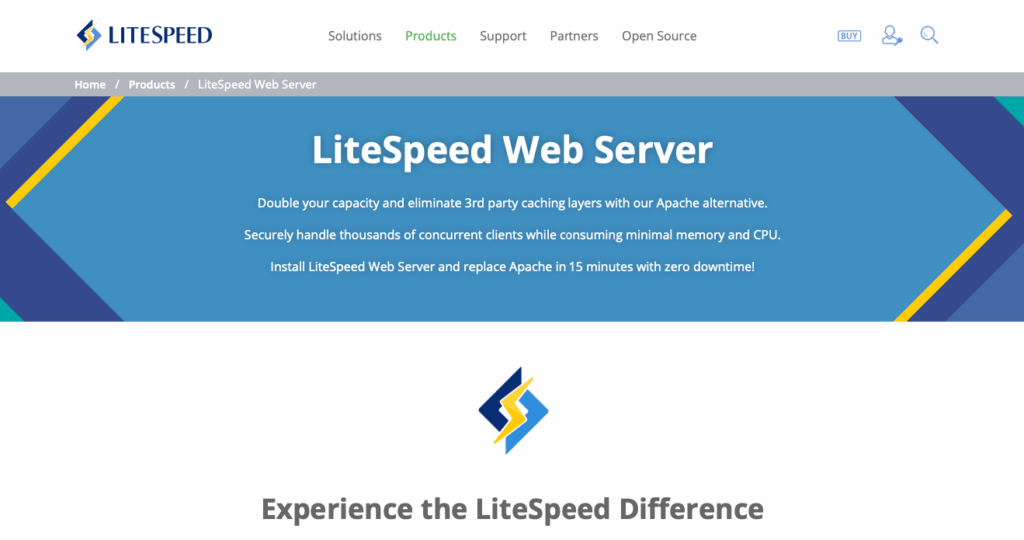
LiteSpeed is a commercial web server that’s quickly become popular for its speed and ease of use. It’s compatible with Apache configurations and is known for handling dynamic content very efficiently, often outperforming Apache and Nginx in PHP-based environments like WordPress.
- Pros: Built-in LSCache for optimized performance, strong DDoS protection, and direct compatibility with cPanel and Apache rules.
- Cons: Commercial license required for advanced features, though a limited free version exists.
- Best for: WordPress sites, WooCommerce stores, and speed-sensitive applications.
LiteSpeed offers seamless integration with hosting panels like cPanel, making it easy to deploy in traditional hosting environments. Compared to Nginx, LiteSpeed delivers comparable or better performance while requiring less custom configuration, making it appealing for users who want speed without a complex setup.
Microsoft IIS
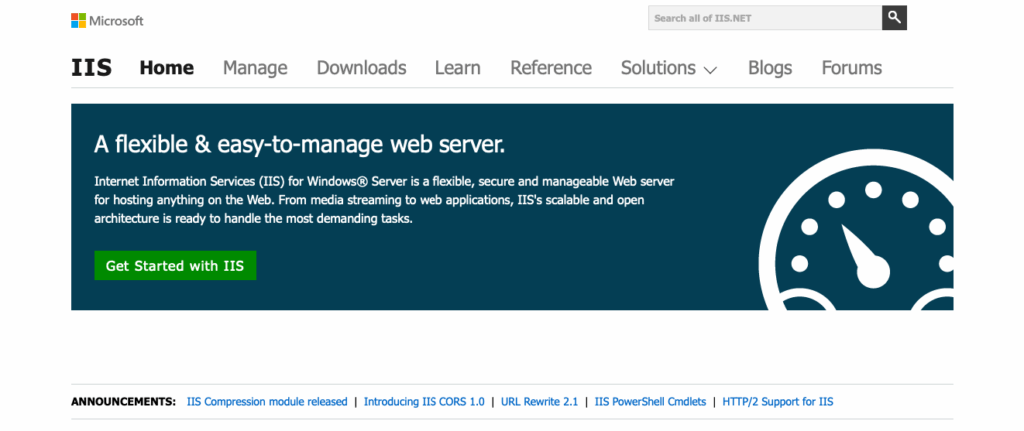
Internet Information Services (IIS) is Microsoft’s official web server, tailored for Windows environments. It’s tightly integrated with the Windows ecosystem and supports frameworks like ASP.NET out of the box.
- Pros: Seamless integration with Windows Server, Active Directory, and .NET; GUI-based configuration.
- Cons: Only available on Windows; fewer community-driven modules than open-source alternatives.
- Best for: Enterprise applications built with Microsoft technologies, .NET hosting, and internal tools running on Windows Server.
While Linux servers dominate in open-source hosting, IIS remains widely used in corporate, educational, and government networks where Microsoft’s software stack is the standard.
Caddy Server
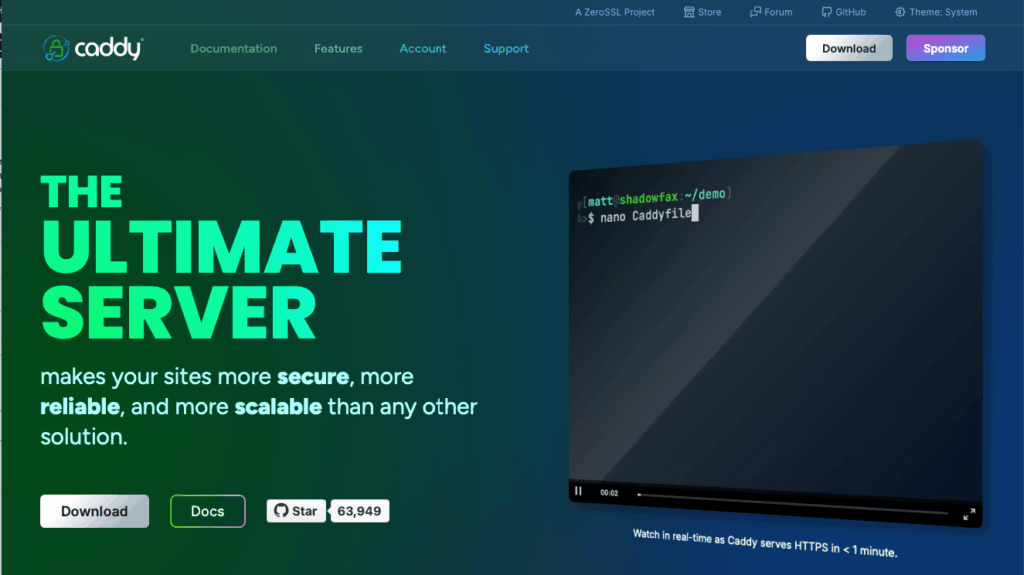
Caddy is a modern web server that prioritizes developer convenience and security. Its standout feature is automatic HTTPS via Let’s Encrypt, making it extremely beginner-friendly.
- Pros: Zero-config HTTPS, simple text-based configuration, and fast startup.
- Cons: Smaller community and fewer advanced modules compared to Apache or Nginx.
- Best for: Quick site deployments, dev environments, or small-to-mid-sized sites needing SSL without the hassle.
Where Apache and Nginx require manual SSL configuration, Caddy makes encryption the default. It’s ideal for projects where simplicity and security are equally important. Though younger than the others, Caddy scales well for microservices and modern web stacks, offering surprising performance with minimal configuration.
OpenLiteSpeed
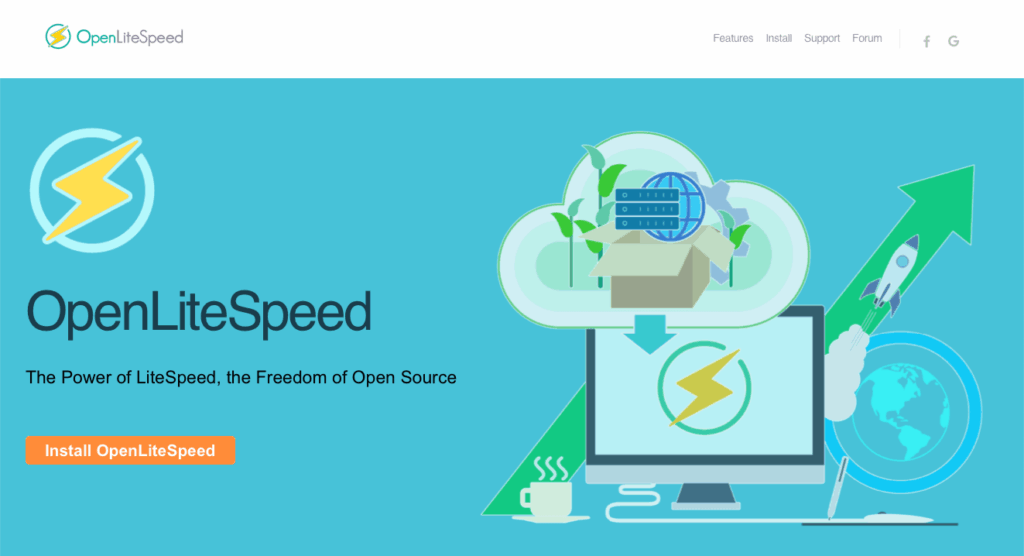
OpenLiteSpeed is the open-source counterpart of LiteSpeed, offering many of the same benefits at no cost. It retains core performance features like LSCache and Apache compatibility.
- Pros: High-performance web serving, free licensing, support for modern PHP versions.
- Cons: Some premium features (like QUIC or enterprise-grade DDoS protection) are restricted to paid versions.
- Best for: WordPress users looking for better speed than Apache without spending on commercial licenses.
OpenLiteSpeed is often chosen by those who want LiteSpeed-level performance but are comfortable managing a more DIY setup. It combines fast dynamic content handling with a more accessible price point.
Apache Tomcat
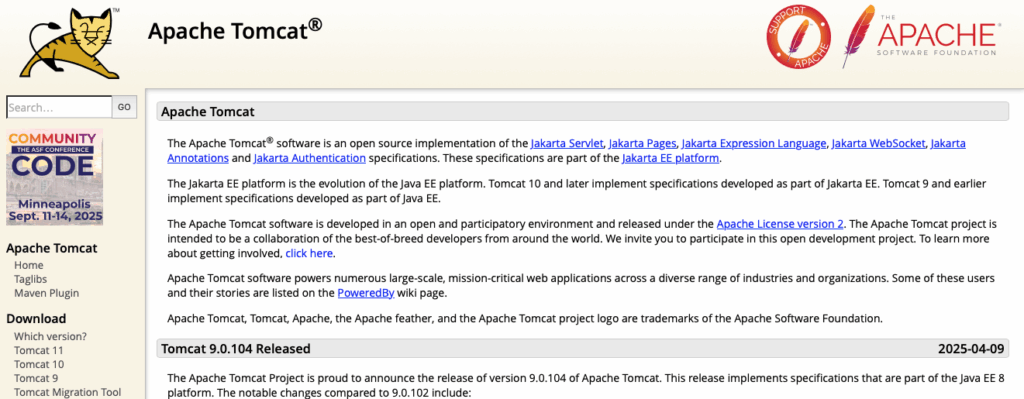
Tomcat is not a general-purpose web server like the others but rather a Java servlet container designed to serve Java applications. It’s commonly used in enterprise stacks requiring Java-based backends.
- Pros: Purpose-built for Java, supports JSP and servlets, backed by the Apache Software Foundation.
- Cons: Poor performance when serving static files or non-Java apps; limited use outside Java environments.
- Best for: Java web apps in enterprise settings.
Tomcat can be used alongside Nginx or Apache HTTPD to serve static files and handle Java logic separately, offering more flexibility to Java-centric stacks. It’s ideal in environments where Java is the foundation of the application logic.
Node.js (as a server environment)
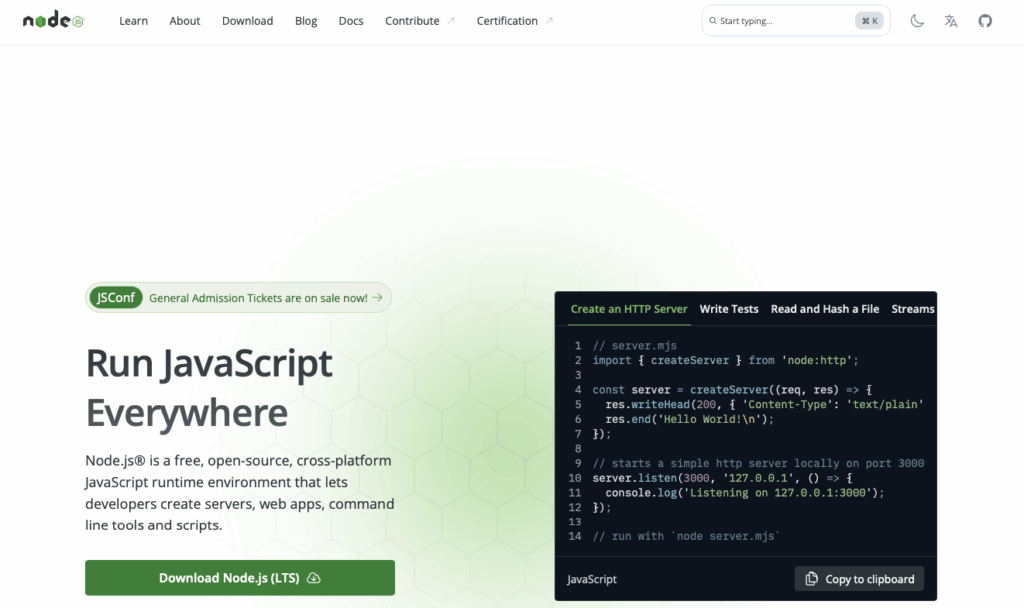
Node.js is not traditional web server software, but it enables you to write your own server with frameworks like Express.js. It’s asynchronous and non-blocking, making it perfect for real-time applications.
- Pros: Highly scalable for I/O-heavy apps, full control over logic, vibrant JavaScript ecosystem.
- Cons: Requires programming knowledge and manual server creation; not optimized for static file serving by default.
- Best for: APIs, chat apps, collaboration tools, and real-time applications.
Unlike Apache or Nginx, Node.js is a runtime environment you build around. While it can serve static files, it’s more efficient to offload that task to Nginx or another lightweight server. Node.js shines when custom application logic and real-time interactivity are central to your project.
Use Case Recommendations
Now that we’ve explored the top options, here’s a quick breakdown to help match your use case with the right server. This webserver comparison can help clarify which solution performs best in your specific scenario.
- Static websites or landing pages: Nginx or Caddy
- WordPress and dynamic PHP applications: LiteSpeed or OpenLiteSpeed
- Java-based enterprise apps: Apache Tomcat
- Windows-based infrastructure: Microsoft IIS
- Real-time or API-based applications: Node.js with Express
- General hosting or shared servers: Apache HTTP Server
Each server shines in its niche, so the best pick depends on your specific stack, traffic expectations, and technical preferences.
Conclusion
From the robust flexibility of Apache to the high-speed delivery of Nginx and LiteSpeed, today’s web server software options cover every type of project. While Apache remains a staple in many setups, modern alternatives like Caddy and OpenLiteSpeed offer fresh takes on simplicity and performance. Choosing from the best web server software ensures your infrastructure can grow with your needs. For enterprise-level environments, solutions like IIS or Tomcat provide deeper integration with proprietary systems.
Whether you’re launching a small personal blog or deploying a mission-critical enterprise application, the right server software ensures a stable, fast, and secure foundation for your site.
Run Any Server with Confidence at VPS.us
No matter which web server software you choose—Apache, Nginx, LiteSpeed, or even Node.js—you need hosting that gives you full control. At VPS.us, our high-performance KVM VPS plans are designed for developers, sysadmins, and businesses that want speed, flexibility, and root access to configure their stack exactly the way they want.
We recommend the KVM2-US plan—featuring 2 CPU cores, 2 GB RAM, and 25 GB NVMe storage—ideal for running modern web servers with reliable performance and room for essential services.
Deploy your preferred web server in minutes and get the performance you need, backed by powerful infrastructure and reliable uptime.
Host your website your way—on VPS.us.



